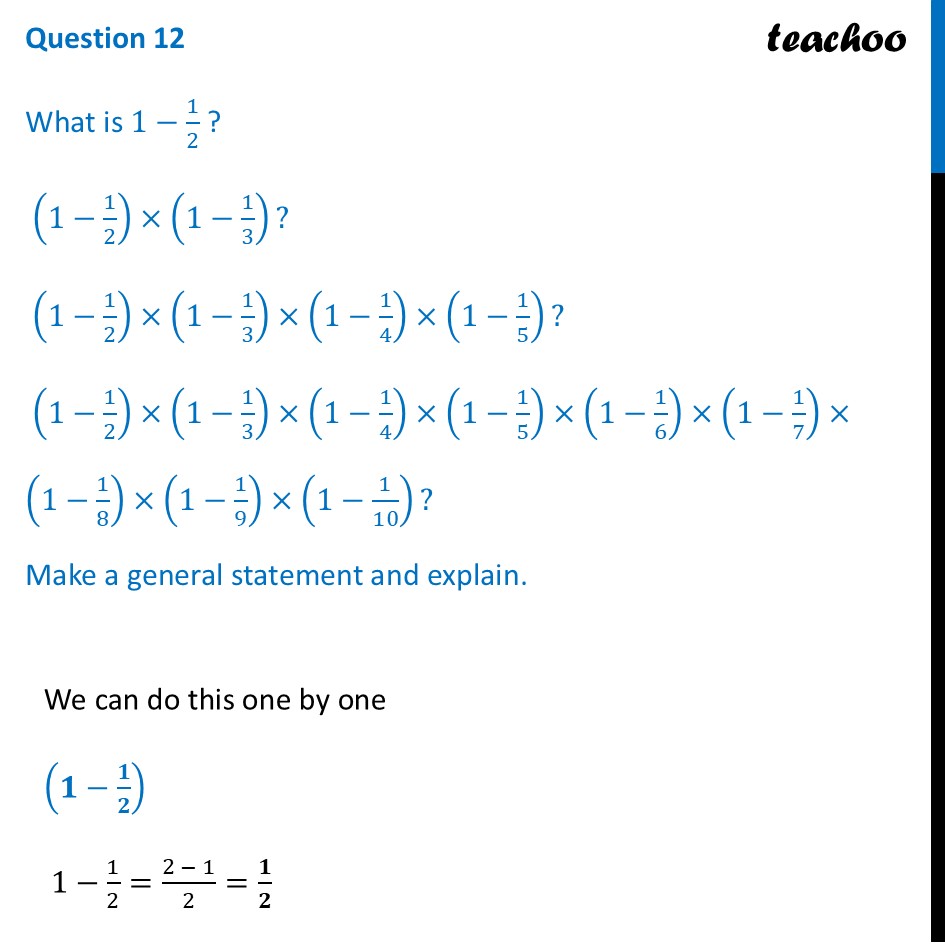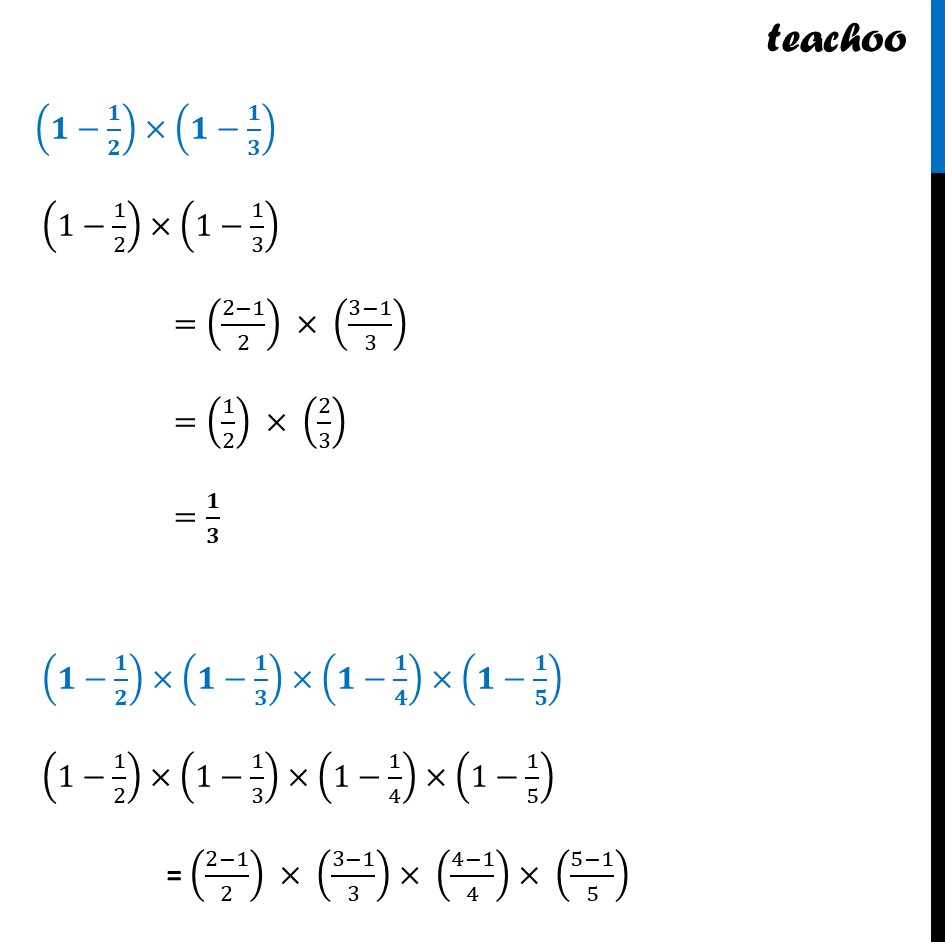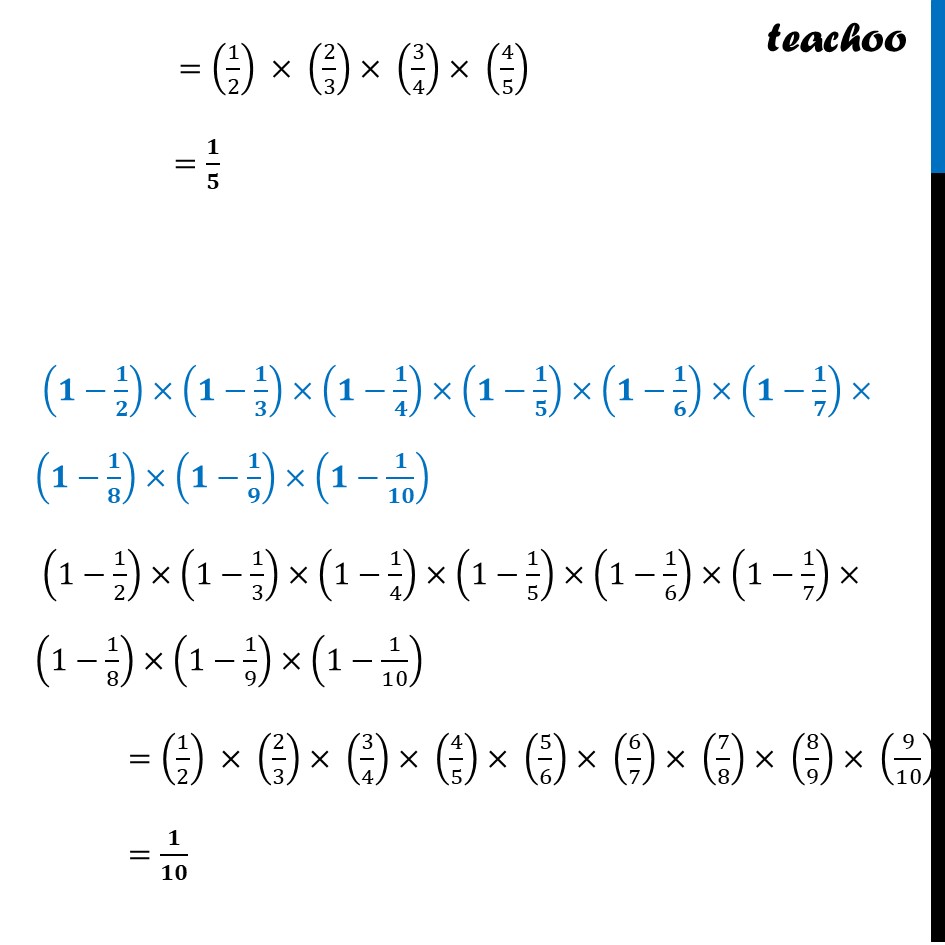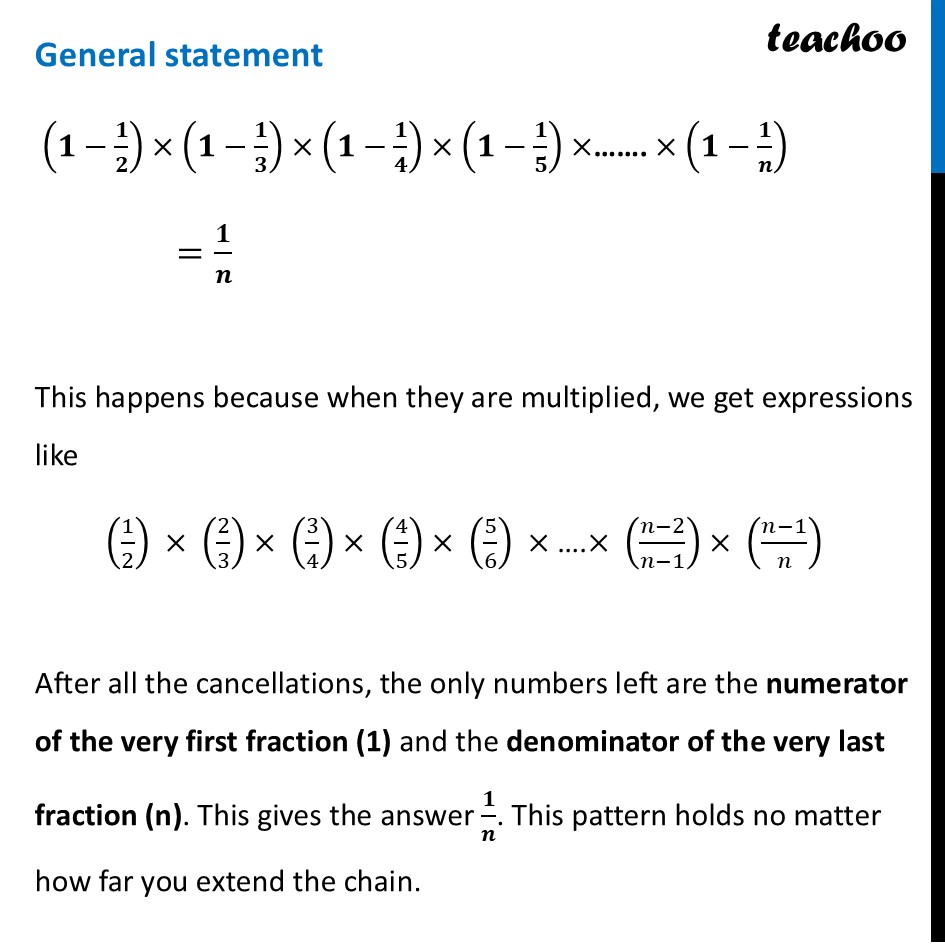



Figure it out - Page 196 to 198
Figure it out - Page 196 to 198
Last updated at October 6, 2025 by Teachoo




Transcript
Question 12 What is 1−1/2 ? (1−1/2)×(1−1/3)? (1−1/2)×(1−1/3)×(1−1/4)×(1−1/5)? (1−1/2)×(1−1/3)×(1−1/4)×(1−1/5)×(1−1/6)×(1−1/7)×(1−1/8)×(1−1/9)×(1−1/10)? Make a general statement and explain. We can do this one by one (𝟏−𝟏/𝟐) 1−1/2=(2 − 1)/2=𝟏/𝟐 (𝟏−𝟏/𝟐)×(𝟏−𝟏/𝟑) (1−1/2)×(1−1/3) =((2−1)/2) × ((3−1)/3) =(1/2) × (2/3) =𝟏/𝟑 (𝟏−𝟏/𝟐)×(𝟏−𝟏/𝟑)×(𝟏−𝟏/𝟒)×(𝟏−𝟏/𝟓) (1−1/2)×(1−1/3)×(1−1/4)×(1−1/5) = ((2−1)/2) × ((3−1)/3)× ((4−1)/4)× ((5−1)/5) =(1/2) × (2/3)× (3/4)× (4/5) =𝟏/𝟓 (𝟏−𝟏/𝟐)×(𝟏−𝟏/𝟑)×(𝟏−𝟏/𝟒)×(𝟏−𝟏/𝟓)×(𝟏−𝟏/𝟔)×(𝟏−𝟏/𝟕)×(𝟏−𝟏/𝟖)×(𝟏−𝟏/𝟗)×(𝟏−𝟏/𝟏𝟎) (1−1/2)×(1−1/3)×(1−1/4)×(1−1/5)×(1−1/6)×(1−1/7)×(1−1/8)×(1−1/9)×(1−1/10) =(1/2) × (2/3)× (3/4)× (4/5)× (5/6)× (6/7)× (7/8)× (8/9)× (9/10) =𝟏/𝟏𝟎 General statement (𝟏−𝟏/𝟐)×(𝟏−𝟏/𝟑)×(𝟏−𝟏/𝟒)×(𝟏−𝟏/𝟓)×……. ×(𝟏−𝟏/𝒏) =𝟏/𝒏 This happens because when they are multiplied, we get expressions like (1/2) × (2/3)× (3/4)× (4/5)× (5/6) × ….× ((𝑛−2)/(𝑛−1))× ((𝑛−1)/𝑛) After all the cancellations, the only numbers left are the numerator of the very first fraction (1) and the denominator of the very last fraction (n). This gives the answer 𝟏/𝒏. This pattern holds no matter how far you extend the chain.